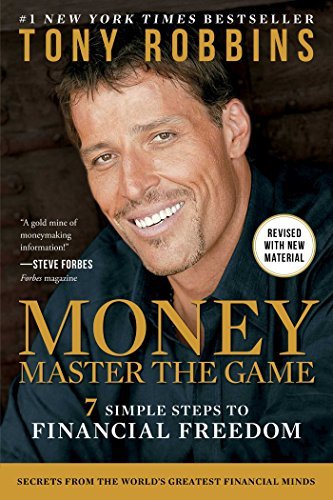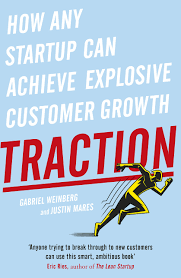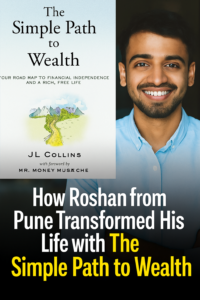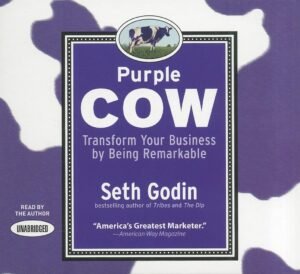Overview – Why This Book Matters
Money is one of the most misunderstood yet powerful forces in our lives. For most people, it’s either a source of endless stress or fleeting excitement. Tony Robbins, world-renowned coach and motivational speaker, wrote Money: Master the Game to demystify wealth creation and bring billionaire-level financial strategies to ordinary people.
At its core, the book teaches one truth:
👉 “You either master money, or money masters you.”
This blog will not only summarize Robbins’ 7 steps to financial freedom, but also show how real people have applied them to transform their financial lives. Whether you are a salaried professional, a budding entrepreneur, or someone buried in debt, this book offers tools to create lasting security and freedom.
Why Money is a Good Servant but a Bad Master
Robbins begins with a timeless principle: money is meant to serve you, not control you.
When you control money, you decide:
Where it is spent
Who receives it
How it is invested
Whether it grows your future
But when money controls you, life becomes a treadmill: chasing promotions, showing off lifestyles, working endlessly without ever feeling free.
Money is also tied to human emotions—religion, sex, politics, and wealth are often avoided in conversation because they trigger deep feelings. Yet Robbins insists: mastering money is mastering emotions.
Most importantly, money itself is not what we crave. What we desire are its feelings:
The empowerment of being debt-free
The freedom to pursue passions
The security of knowing your family is safe
The joy of helping loved ones and those in need
Key Concepts – Tony Robbins’ 7 Steps to Financial Freedom
Step 1: Tap the Power – Make the Most Important Financial Decision of Your Life
Albert Einstein called compound interest the greatest invention in human history. Robbins echoes this truth: start investing early.
📖 Example from the book:
William, who invests ₹4,000/month starting at age 20 and stops at 40, ends with ₹18 crore at retirement.
James, who starts at 40 and invests the same amount until 65, ends with just ₹3 crore.
👉 William’s wealth is 600% higher simply because he started earlier.
💡 Action Tip: Even if you start small, begin investing today. Time is your greatest ally.
Step 2: Become the Insider – Know the Rules Before You Play the Game
Most people trust brokers or “financial advisors” blindly, not realizing that hidden fees silently eat away their wealth. Robbins exposes myths:
Myth 1: “We’ll beat the market for you.” (Reality: Most can’t.)
Myth 2: “Our fees are small.” (Reality: Fees compound against you, just like interest does for you.)
💡 Action Tip: Avoid high-fee products. Stick to low-cost index funds or ETFs. Always ask: “How are you making money from my money?”
📖 Real-Life Example: Rina, a corporate employee in Pune, once paid 2% annual fees on mutual funds. After reading Robbins, she switched to index funds with 0.2% fees. In 20 years, that difference alone saved her over ₹1 crore in fees.
Step 3: Make the Game Winnable
Robbins asks: What’s your number?
You don’t need billionaire wealth; you need enough to cover your lifestyle. Define a realistic figure for financial independence.
💡 Five elements to win the game:
Save more (cut lifestyle inflation).
Avoid unnecessary luxuries (choose affordable versions).
Earn more (learn new skills, deliver more value).
Get better returns (diversify smartly).
Give more (build purpose into your wealth).
📖 Real-Life Example: Raj, a 35-year-old teacher in Hyderabad, set his “number” at ₹2.5 crore. By reducing his expenses, starting a side business, and investing consistently, he is on track to achieve financial independence before 50—without needing to be a millionaire.
Step 4: The Most Important Investment Decision – Asset Allocation
It’s not stock-picking or timing the market that builds wealth—it’s asset allocation. Robbins highlights the “All Seasons Portfolio” from billionaire Ray Dalio:
30% Stocks
40% Long-term bonds
15% Mid-term bonds
5% Gold
5% Commodities
This mix protects against inflation, recession, or boom.
💡 Action Tip: Identify your risk profile (risk tolerance, appetite, and capacity) and rebalance your portfolio every 6 months.
Step 5: Create a Lifetime Income Plan
The goal is peace of mind—knowing your future is secured. Robbins emphasizes building lifetime income streams that withstand inflation, deflation, and economic shocks.
Options include:
Rental income
Dividends from stocks
Pension or annuities
SIPs in balanced funds
📖 Real-Life Example: Priya, a Mumbai entrepreneur, invested in rental property and dividend stocks. When COVID-19 shut down her boutique, her passive income allowed her to survive without panic.
Step 6: Invest Like the 0.001% – The Billionaire Playbook
Robbins interviewed the world’s top investors. Their advice is surprisingly simple:
Warren Buffett: “Don’t try to beat the market. Buy the market.”
Paul Tudor Jones: Always play defense; never bet it all.
John Bogle: Invest in ETFs and hold long-term.
💡 Action Tip: Don’t chase hot stocks. Focus on broad, diversified, long-term investments.
📖 Real-Life Example: Arjun, a doctor in Delhi, once tried stock-picking and lost heavily. After applying Robbins’ billionaire playbook, he shifted to ETFs, a side business, and safe bonds. Today, he enjoys steady growth without sleepless nights.
Step 7: Just Do It, Enjoy It, and Share It
Knowledge is useless without action. Robbins urges readers to start, enjoy the process, and give back.
Wealth is not just numbers; it’s about living fully and contributing.
📖 Real-Life Example: After reaching her financial independence target, Sneha from Chennai pledged 5% of her profits to sponsor rural education. The joy of giving became her greatest return on investment.
Lessons Learned – The Biggest Takeaways
Start early. Compounding rewards the patient.
Cut fees. Hidden charges silently destroy wealth.
Know your number. Define your independence figure.
Diversify. Asset allocation beats speculation.
Build lifetime income. Security > excitement.
Think like billionaires. Simple, defensive, long-term strategies win.
Action beats perfection. Start small, but start today.
Step-by-Step Action Plan for Readers
Open an investment account today.
Start with a low-cost index fund SIP—even ₹1,000/month.
Write down your “financial freedom number.”
Diversify across equity, bonds, gold, and real estate.
Rebalance portfolio every 6 months.
Automate savings—pay yourself first.
Commit to giving back (even 1%).
Call to Action
Inspired by these stories? Don’t just read—act.
Your path to financial freedom can start today.
👉 Visit MYCASHFLOW or call 885051169 to learn how to apply Tony Robbins’ principles to your own life.
Disclaimer
This story is hypothetical and created only to illustrate how one might apply the principles of Money: Master the Game by Tony Robbins in real life.




